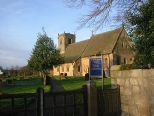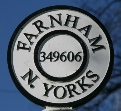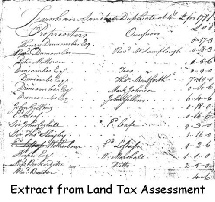A North Yorkshire
Village

St Oswald’s Farnham


The Landowners

Following the Norman invasion in 1066 -
The supporters
of the King were rewarded with estates and land they, in turn, rewarded their supporters
with land and so a slow distribution was begun. The exception, of course, was the
vast estates kept by the King.
From 1781 Land Tax documents it can be seen that the
land of Farnham parish was held by twenty persons at that date -
The Main landowners with the largest holdings were as follows:
Sir John Coghill. His holding included Low Hall -
The
family are said to have settled in the district in the 11th century and to be descended
from 'Gamel, the Kings Fowler'. they played a major part in the history of the district
for hundreds of years.
Elizabeth Bickerdyke The Bickerdyke holdings represented some
20 -

Henry Duncombe Esq. In the 17th century Sir Charles Duncombe, a banker in London,
became wealthy by providing finance for the King and among his titles were, Sheriff
of London in 1699 and Lord Mayor in 1709. In 1687 he bought estates at Helmsley.
Henry Duncombe was a descendant of Sir Charles, through the union of a Thomas Duncombe
and Sarah Slingsby -
From the records it is apparent that there was a great deal of trading in land -